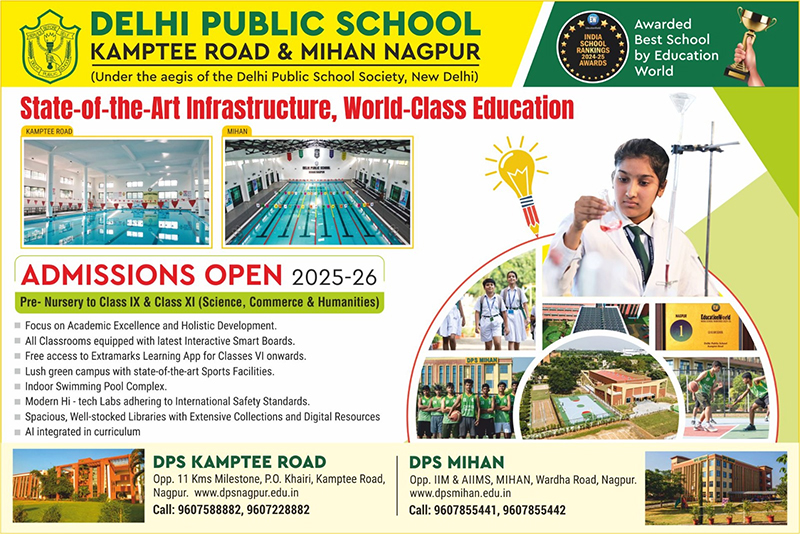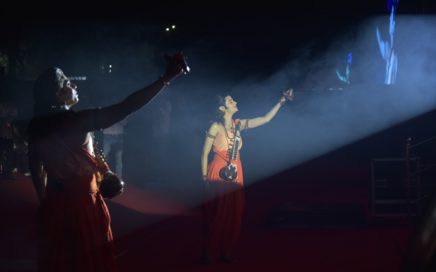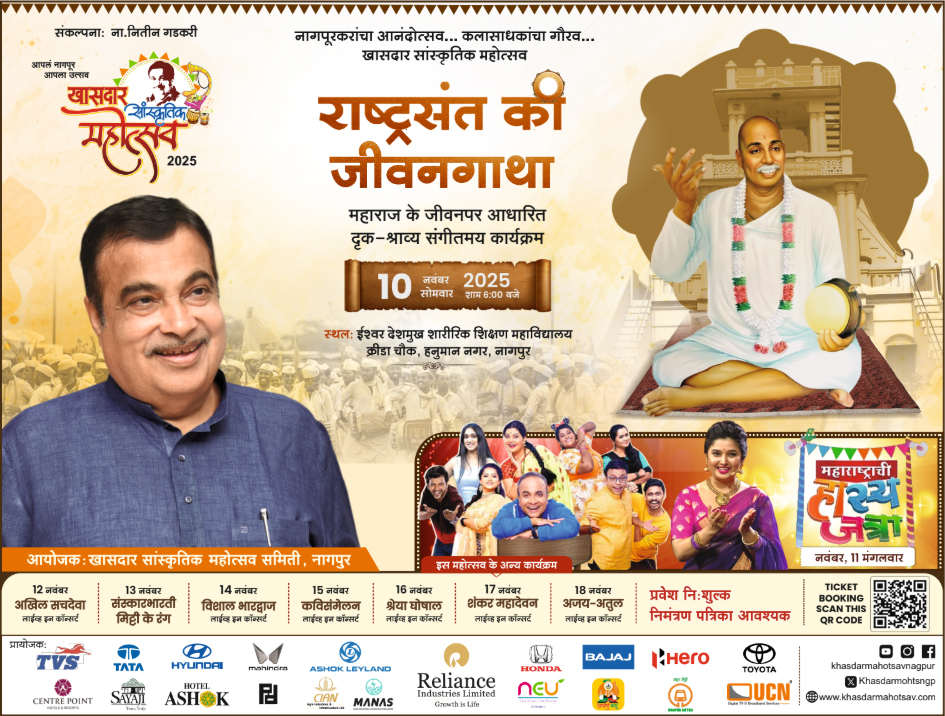
Visvesvaraya National Institute of Technology (VNIT), Nagpur hosted the 4th International Conference on the Paradigm Shifts in Communication, Embedded Systems, Machine Learning and Signal Processing (PCEMS 2025) on November 6, 2025. The two-day international conference, organized by the Department of Electronics and Communication Engineering, is a flagship annual event that brings together leading academicians, researchers, technologists, and industry professionals to discuss advancements shaping the future of intelligent communication systems, AI-driven signal processing, and emerging embedded technologies.
The valedictory ceremony of PCEMS 2025 was held on 7th November, 2025. The valedectory ceremony was graced by honourable director in charge, VNIT Nagpur, Dr. Gyan Prakash Singh. The chief guest of the valedictory ceremony was Dr. Srinivas Kuchipudi, Deputy Technical Director Reliability and Quality Assurance, Advanced Systems Laboratory, DRDO while the Guest of honor was Dr. Jeremy Blum, associate professor of Computer Science and Chair of the Mathematics and Computer Science programs Pennsylvenia State University. Dr. Kuchipudi commended the efforts of the department of ECE in bringing the four different technical verticals on one platform and expressed the need of development of indigenous product and technology by multi disciplinary engineering. Dr. Blum appreciated the quality of the keynote speeches and oral presentations by different participants. Dr. Singh appreciated the efforts of the department and encouraged the departments to host more such events in the future. The 15 Industry participants and the 12 academic participants of PCEMS 2025 were felicitated in the valedictory ceremony. A total of 9 awards in different disciplines were announced in PCEMS 2025 including best paper award in communication, Artificial Intelligence and Machine Learning, Signal and Image Processing and Embedded Systems, best paper by a woman researcher, best PhD thesis award and overall best paper award. The Visvesvaraya best paper award for the overall best paper went to Dr. Swati Hira from IIIT Nagpur for the paper titled “Contour guided Diffussion for Medical Image synthesis”. This paper also won the best paper by a woman researcher award.
The PCEMS 2025 conference received an overwhelming response from the research community with 296 paper submissions from across India and abroad. After a rigorous peer review by over 250 reviewers, 125 high-quality papers were selected for presentation across 16 thematic sessions, including communication systems, embedded platforms, machine learning, IoT, AI applications, and signal/image processing. The conference is supported by the IEEE Maharashtra Section and serves as a major platform for young researchers to engage with global experts, exchange ideas, and explore collaborations in next-generation communication and computation paradigms. It is planned to publish the peer-reviewed and selected papers of the conference as proceedings with Springer in their prestigious “Lecture Notes in Electrical Engineering (LNEE)” series, providing global visibility and scholarly recognition to the contributors.
In addition to paper presentations, PCEMS 2025 featured an Industry Expo, showcasing innovative technologies and prototypes developed by research laboratories and industry partners. Notable organizations supporting the conference include Spaaratsoft Technologies, Ansys (part of Synopsys), ARK, Scientech, and MathWorks.
The conference commenced with an inspiring inaugural keynote address by Dr. P. Hanumantha Rao, Director General, SAMEER (R&D of MeitY, Govt. of India), on the topic “5G and 6G Technologies: India Initiatives.” He highlighted India’s strides in developing indigenous MIMO and mmWave systems, contributions to global 5G standardization, and ongoing R&D toward 6G demonstrations involving Intelligent Reflecting Surfaces (IRS) and Orbital Angular Momentum (OAM) for advanced communication applications.
This was followed by a technically stimulating keynote by Prof. A. N. Rajagopalan, Indian Institute of Technology Madras, who spoke on “Computer Vision for Underwater and Drone-based Sea-surface Imagery.” He discussed pioneering work in underwater image restoration and 3D depth mapping through deep learning models that integrate haze and geometry for enhanced environmental perception which are critical for marine and aerial exploration.
The third keynote, titled “A Gentle Introduction to Generative Adversarial Networks (GANs)” was delivered by Prof. Sumantra Dutta Roy, Indian Institute of Technology Delhi. His talk provided an intuitive understanding of GANs, delving into their mathematical beauty, real-world applications in visual data generation, and the physical significance of deep learning concepts in modern AI systems.
Prof. Rajesh M. Hegde, Indian Institute of Technology Kanpur, delivered an engaging keynote titled “Integrating Blockchain and Federated Learning: Enhancing Energy and Latency in Heterogeneous Edge Networks.” He discussed the convergence of distributed machine learning and blockchain for creating secure, energy-efficient, and scalable communication infrastructures for edge computing and IoT systems.
This was followed by two VIRTUL mode keynotes by Mr. Bharatbhushan Joshi, Advisor & Consultant (Ex-DRDO) titled “From Bits to Bullets: Translating CEMS for Atmanirbhar Bharat in Defence Technology” and by Ms. Kamiya Khatter, Senior Editor, Springer titled “Research Integrity and Publication Ethics”.
Dr. Joshi’s talk focused on how convergence of Communication, Embedded Systems, Machine Learning and Signal Processing (CEMS) maps to defence-technology requirements in India. Ms. Khatter’s talk addressed a theme often under-emphasised in technical conferences: ethics in research, authorship, peer-review integrity, data/manipulation issues, detection of unethical practices. She provided real-world examples, recent trends in scientific publishing, common pitfalls and guidelines for authors, reviewers, editors—particularly relevant for early-career researchers.
The seventh keynote on Industry–Academia Collaboration was delivered by, Mr. Chandan Pramanick, Director, MathWorks Education, India, where he stressed the importance of collaborative approach between Indutry and cademia for the betterment of human resources with real life case studies.
The eighth keynote titled “Connected Roads, Disconnected Future? Lessons from 25 Years of Vehicular Networking” was delivered by Dr. Jeremy Blum from Pennsylvania State University, USA. In this talk he presented the evolution of vehicular networking technologies, examined why technical success did not always translate into deployment, and argued that future progress must begin with application needs, not available technologies.
The 9th keynote titled “Constellation Engineering for Next-Generation Modulation and Multiple Access Techniques” was delivered by Dr. Anshul Agarwal from IIT Roorkee. He covered physical-layer wireless communication, focusing especially on constellation design (signal constellations), modulation, and multiple access techniques in future wireless systems.
Dr. Sanjeev Mehta from Space Applications Centre, ISRO delivered the 10th keynote titled “Electronic Design of Remote Sensing Electro-Optical Payloads”. In his talk, He discussed how India’s space sector is opening up to non-government entities (startups, private) and how this drives demand for multi-disciplinary engineers who can design reliable, compact electronics for space.
Eventually, the last keynote titled “DeMoAiR: Deep Learning based Multi-modal Airwriting Recognition for Smart Wearables” was delivered by the youngest of the keynote speakers, Dr. Ayush Tripathi from IIT Indore, who happens to be an alumni of VNIT Nagpur. Dr. Tripathi presented his research work on a multi-modal wearable system that recognises “airwriting” (finger-based writing in free space) combining EEG (brain), EMG (muscle), IMU (wrist motion) signals.
Dr. Hanumantha Rao, Director General, SAMEER (R&D of MeitY, Govt. of India) inaugurated the Industry Expo of PCEMS 2025 and appreciated the efforts put together by Dept. of ECE to assemble so many industries to display their products and technologies.

















